How John Hennessey Builds Some Of The World’s Fastest Supercars
Houston’s Hennessey Performance is dead-set on making the Venom F5 the fastest car on Earth.
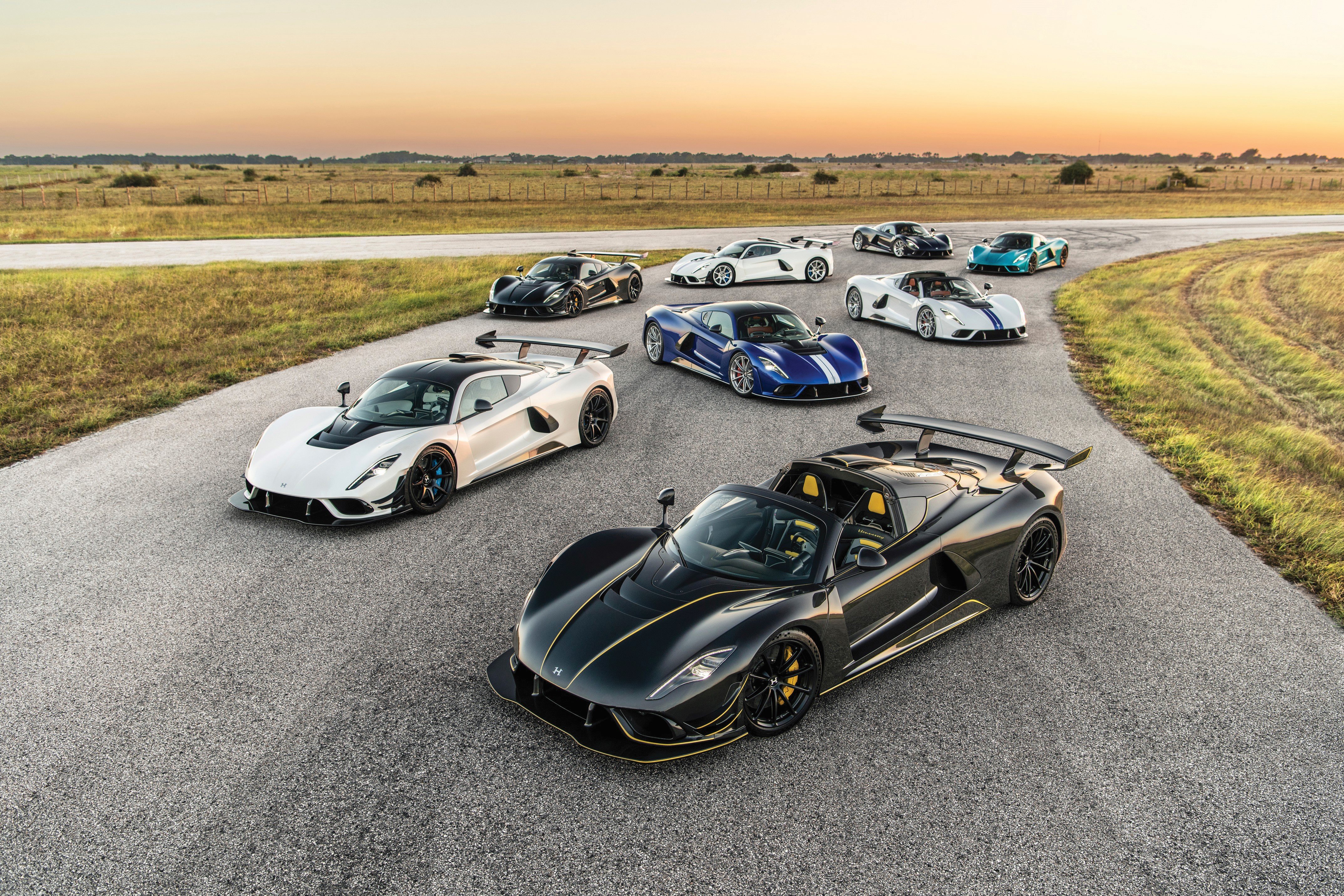
For John Hennessey, the moment he realized the esoteric power of torque was a seminal one. He does suggest his connection with petroleum-firing cylinders dates prenatal, when he swears remembering driving around Houston in his dad’s stick-shift 1964 GTO 389—while still in his mom’s womb. But the first time Hennessey credits being consciously smacked in the head with that indelible power was when, as a seventh grader, he’d ignored his mother’s orders to be home by curfew.
“I knew I was supposed to be home for something, but I was blowing it off,” Hennessey recalls, chuckling at the memory. “By then my dad had a ’68 Pontiac GTO and he comes ripping down the street, rolls down his window, and says, ‘You’re supposed to be home. Get your ass back there!’ And I said, ‘Yes, sir.’ So I go walk to get in the car, but he’s slams it into gear and does about a 200-foot burnout because he’s pissed off, and basically he’s telling me that I had to walk home. I looked at my friends and they look at me, and all of a sudden my social status with my junior high friends went up because now I’ve got this cool dad who does burnouts,” he laughs. “I thought, ‘Okay, well, maybe if I get some social status with my friends, maybe they’ll give me some status with the ladies.’ ”
“I really, really, really don’t want to lose.”
When he finally bought his first car, a 1969 Oldsmobile 442 convertible, on day one Hennessey started modifying the carburetor, spark plug wires and exhaust. The speed bug bit.
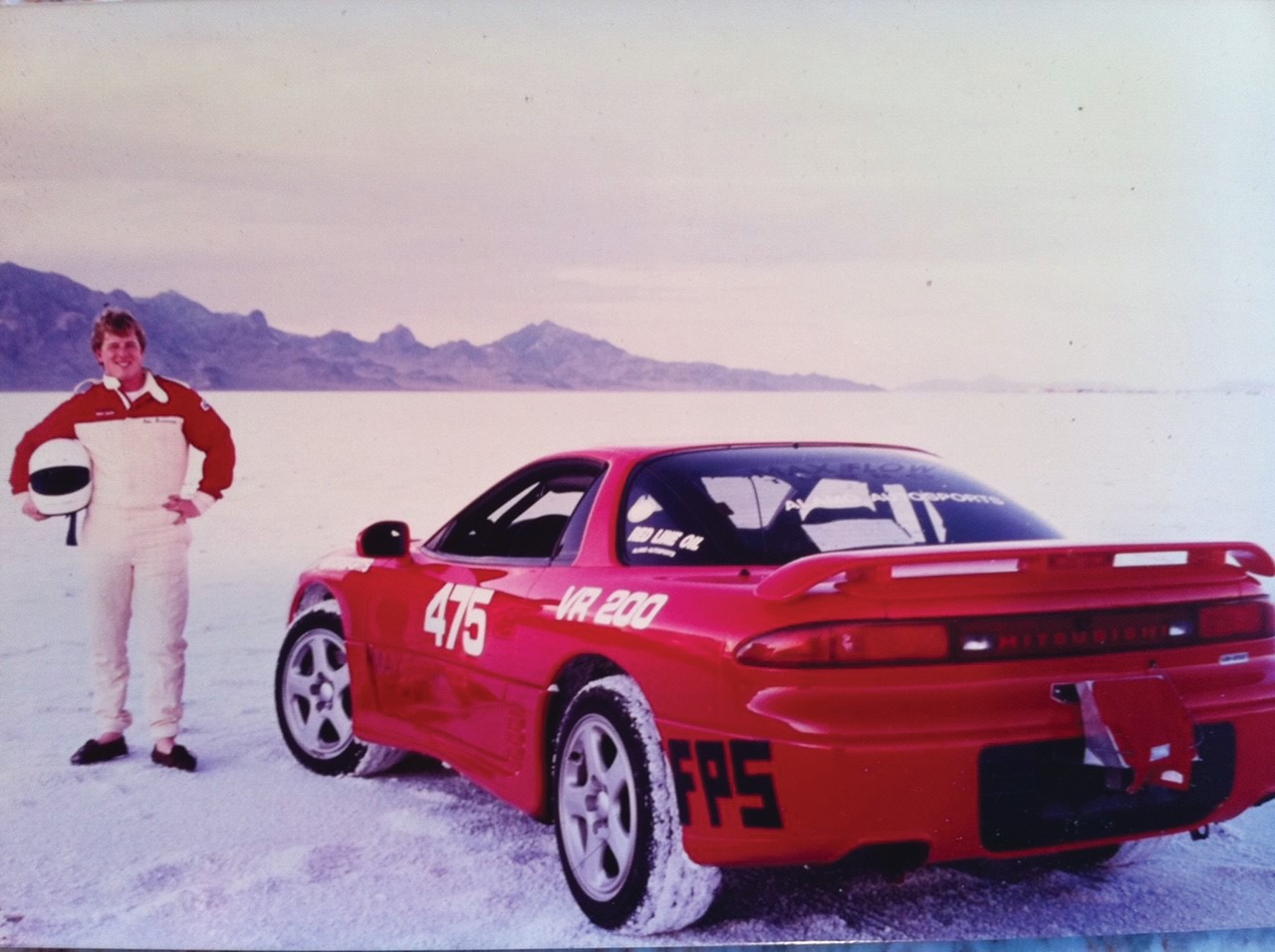
By college, his parents had divorced. Running out of money paying his own way through an engineering degree, Hennessey took what he now jokingly dubs “a 40-year gap year.” While nursing his entrepreneurial spirit with a successful asbestos-removal business, in 1991 he funneled the profits into a blood red Mitsubishi 3000GT VR-4 and started cranking away on the famed 3.0-liter V6, steadily increasing output from 320 to more than 500 horses.
Inspired by a magazine feature on Pikes Peak, he drove the roll cage–enhanced 3000GT to Colorado and ran the famed sprint. And while Hennessey didn’t place, he also didn’t crash. But it was too late, the speed bug multiplied through his bloodstream, inspiring him to follow up quickly with two Nevada races: the Silver State Classic and Nevada Open Road Challenge. The only commandment for the latter, a closed-off 90-mile stretch of highway north of Vegas, was all gas, no brakes. By his second attempt Hennessey averaged 167 mph, capturing the unlimited class and second place overall. In the interim, he also set a class record at Bonneville. The virus now took full control.
“I got a little bit of a reputation of being this crazy guy from Texas who loads up his tools, helmet, spare wheels and tires, etcetera, and just sticks them in the back of his car and shows up to races,” Hennessey remembers wistfully of his penchant for driving to and from events. After one particular long drive home, victorious and with plenty of time to indulge wild thoughts, he broke his vision to his new bride.
“I’m like, ‘I don’t know if this car thing will work or not, but I really enjoy it. I think I’m good at it, and I think there are other people out there who would pay me to modify their cars.’ ”
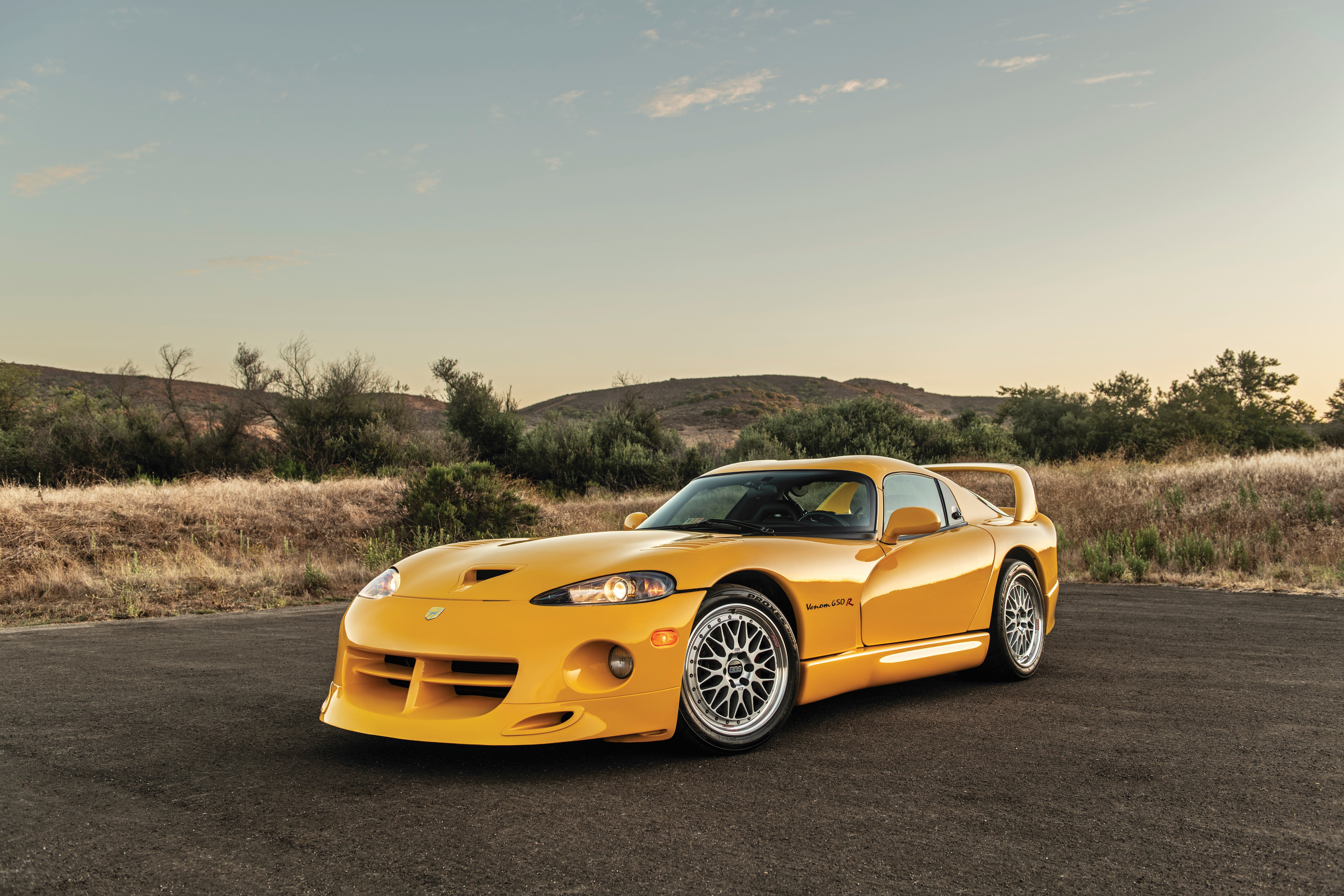
As with all successful endeavors, kismet too played its role. That 3000GT VR-4 mod package held more import than could ever be expected, as Hennessey transitioned much of it from the Mitsubishi to the Dodge Viper—an American muscle car so overpowered, so unhinged, so feral that it became synonymous with absurd rear-wheeled hedonism at the turn of the century. Bolting on a couple turbochargers to the 8.5-liter V10, among other upgrades, the nascent Hennessey Performance boosted output to make the Venom 1000 Viper one of the most powerful cars of the era. The rest, as they say, is Texas hooligan history, as the small Houston shop exploded with the success of his infamous Venom 1000 Viper.
To be clear, it usually wasn’t Hennessey himself smeared in grease wrenching away under a lift, tweaking air filters and adding superchargers to maximize output. Rather, here’s where John Hennessey applied his first Fundamental Rule of Success: Know thyself.
“I’ve always been creative, always good at marketing and sales,” he says. “But what I learned early on when I started racing is that I knew what I wanted the car to do and had a general idea of how I wanted to get it there, but I’ve always felt like there’s more talented mechanics. I’ve probably been able to get where I wanted to go quicker by partnering with or hiring people that have those very specific high-level talented skills to help me achieve my vision.”
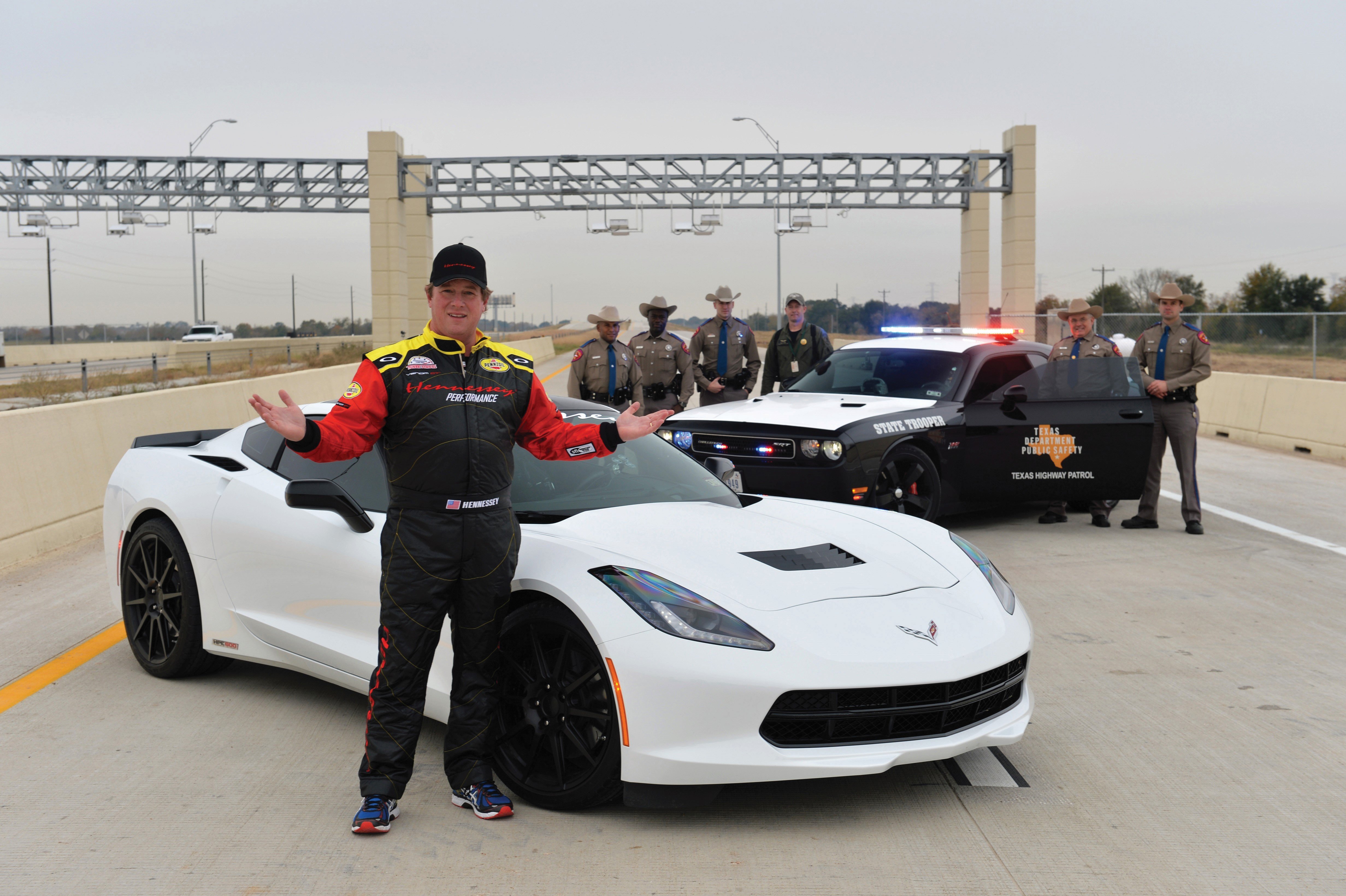
The formula worked, and in the coming years the Hennessey Performance Venom 1000 Viper adorned the covers of evermore gushing petrol-head magazines, winning countless shootouts. Soon segueing from print to the digital age, it became a star of the Internet, YouTube and now social media. The company expanded from Vipers to Corvettes, Camaros and Mustangs, and eventually trucks, pickups and mammoth SUVs. A victim of its own success, Hennessey Performance couldn’t keep up with demand.
“It’s risky going out and breaking top speed records and testing cars at super high speeds, but it’s part of our DNA, part of who we are and what we do.”
The next step perhaps best crystallizes Hennessey’s entrepreneurial gift, as when challenged with a lack of engineers capable of elevating his firm to the next level, did he complain or fret? No. See John Hennessey’s second Fundamental Rule of Success: If a solution doesn’t exist, build one.
Ergo, if capable engineers don’t exist, why not create them himself? So in 2009 Hennessey opened up his own Tuner School, where every year he trains about a hundred students from all over the world. Beyond earning him handsome tuition checks, perhaps more importantly the training ground created a direct pipeline where he plucks the very best to join the growing Hennessey empire. To date, Hennessey estimates more than half of his technical staff have come directly in-house from Tuner School.
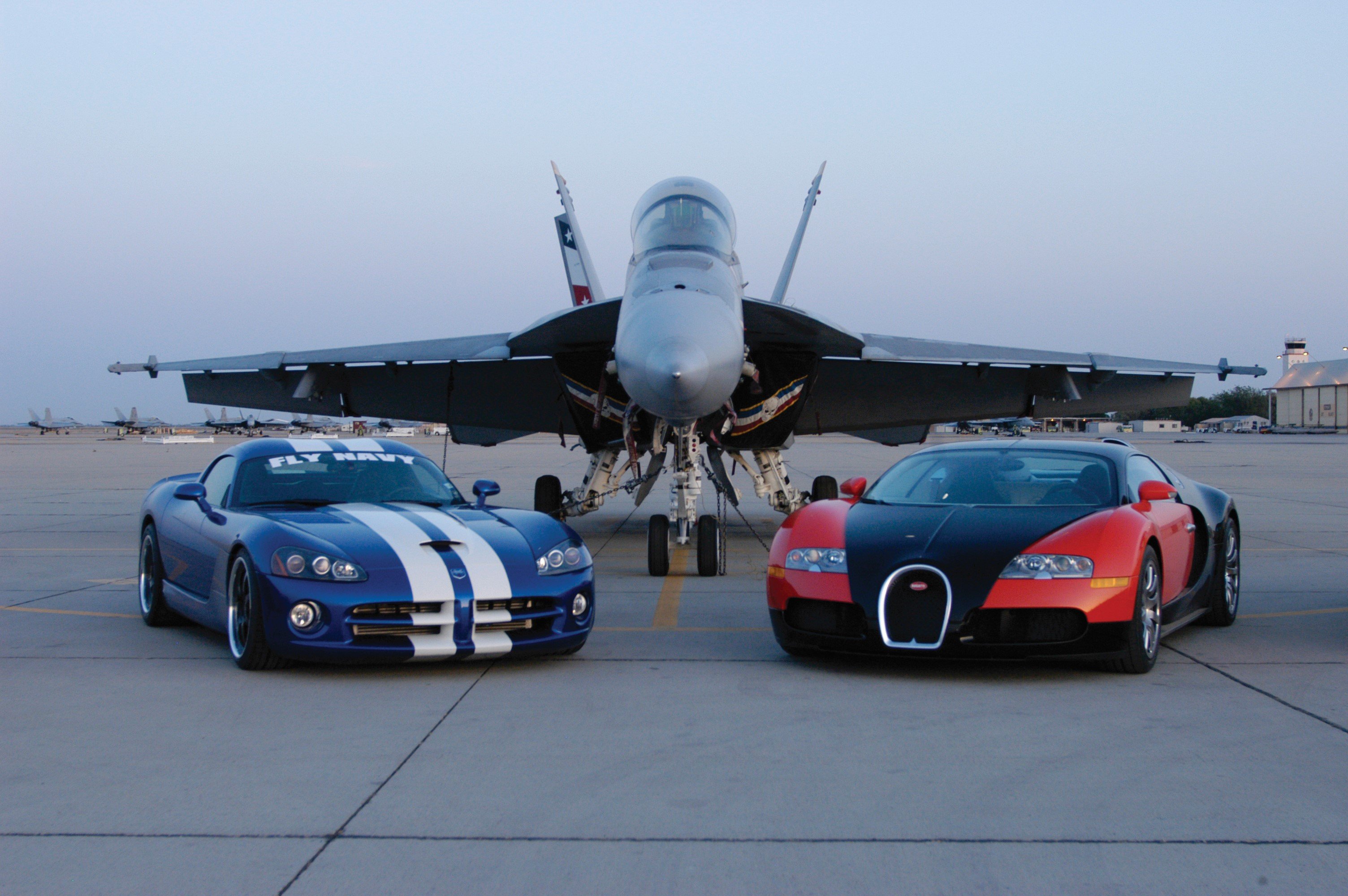
On one particularly impactful Road and Track shootout in 2007, the company’s “Fly Navy” Venom 1000 Twin Turbo Viper accomplished the seemingly impossible, besting the Bugatti Veyron—along with a rogue’s gallery of factory supercars, exotics and modified cars—by clocking a 210.2-mph top speed. This David and Goliath feat, defeating a seven-figure hypercar from one of the industry’s most historic racing marques, earned Hennessey ever more fame. “After that shootout I thought, ‘Okay, that’s great for business. But where do we go from here?’ We’re always looking for the next mountain to climb. I thought, well, gosh, we could just keep adding horsepower, but maybe there’s a way we could go with something lighter weight? And I joked with a friend of mine, ‘Why don’t we take a Lotus Elise, swap out that little four-cylinder and put our twin-turbo Viper engine in the back of it?’ ”
From that seemingly innocuous joke was born not just the Venom GT but an entirely new arm of the Hennessey octopus that would focus on designing and building its own cars fully in-house: Hennessey Special Vehicles. When headed to the SEMA show that year Hennessey tucked some renderings of this unnamed prototype into his backpack, on a whim as he put it, and showed them to veteran journalist Mike Spinelli. A couple days after returning from Vegas Spinelli published them on Jalopnik, and the buzz was so loud it shook the concept from fanciful rendering to potential reality. Suddenly, finally, Hennessey knew his next step.
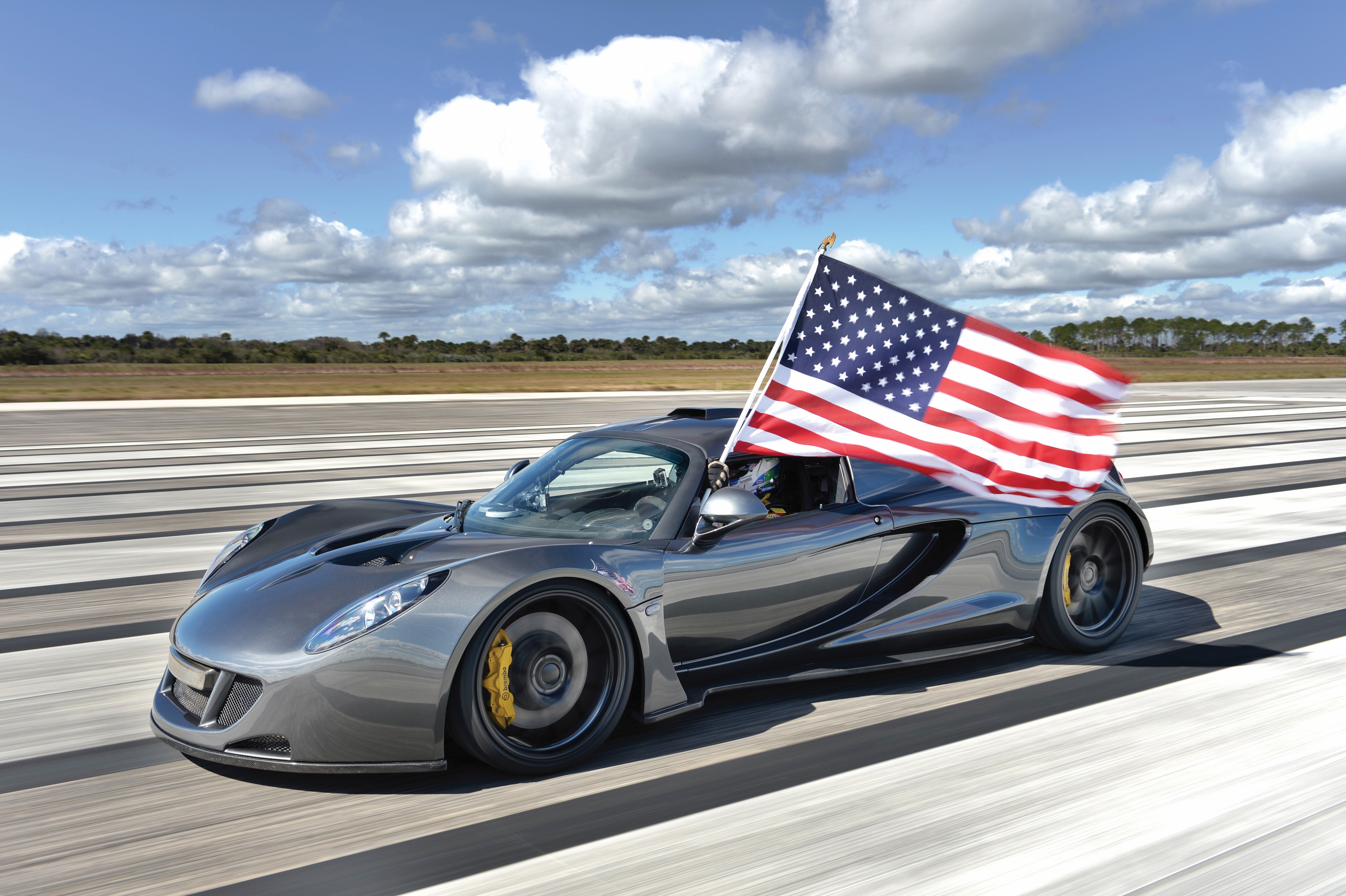
The first Hennessey Venom GT saw the light of day in 2010. By 2014 the Venom GT ran 270 miles an hour on a stretch of the Kennedy Space Center, besting the Bugatti Veyron’s top speed record and earning Hennessey Special Vehicles the record for the world’s fastest production car.
Imagine: Bugatti, Lamborghini, Porsche and Ferrari boast nearly infinite budgets, coffers overflowing with capital, cutting-edge technology and world-class engineers. And here’s this tiny outfit—essentially a mod shop out of Texas—designing, engineering and building a vehicle capable of conquering them all.
“I was probably more relieved than I was elated,” Hennessey shares when asked about the pride he felt at such a Herculean, truly tectonic accomplishment. “I’ve always told my kids that I hate losing more than I like winning. Now, in the past five years, maybe the joy that I get from winning—because I went to this therapy thing for some childhood trauma crap a long time ago—maybe now I can tap into feeling joy a little bit more than I used to feel.”
To wit, John Hennessey’s third and final Fundamental Rule of Success: Hate losing. A lot.
At last count, Hennessey estimates the company has modified some 16,000 vehicles in the past 33 years, selling 13 Venom GTs before sunsetting the model in 2015. And despite the accomplishment, something always stuck in his indefatigable craw: Internet haters who would comment that all Hennessey accomplished was an engine swap, nothing more. Clearly frustrated, he lists the parts carried over from the Elise (chassis, head- and tail-lights, windscreen and parts of the dash) but states “basically 90 percent of the Venom GT was our own car.”
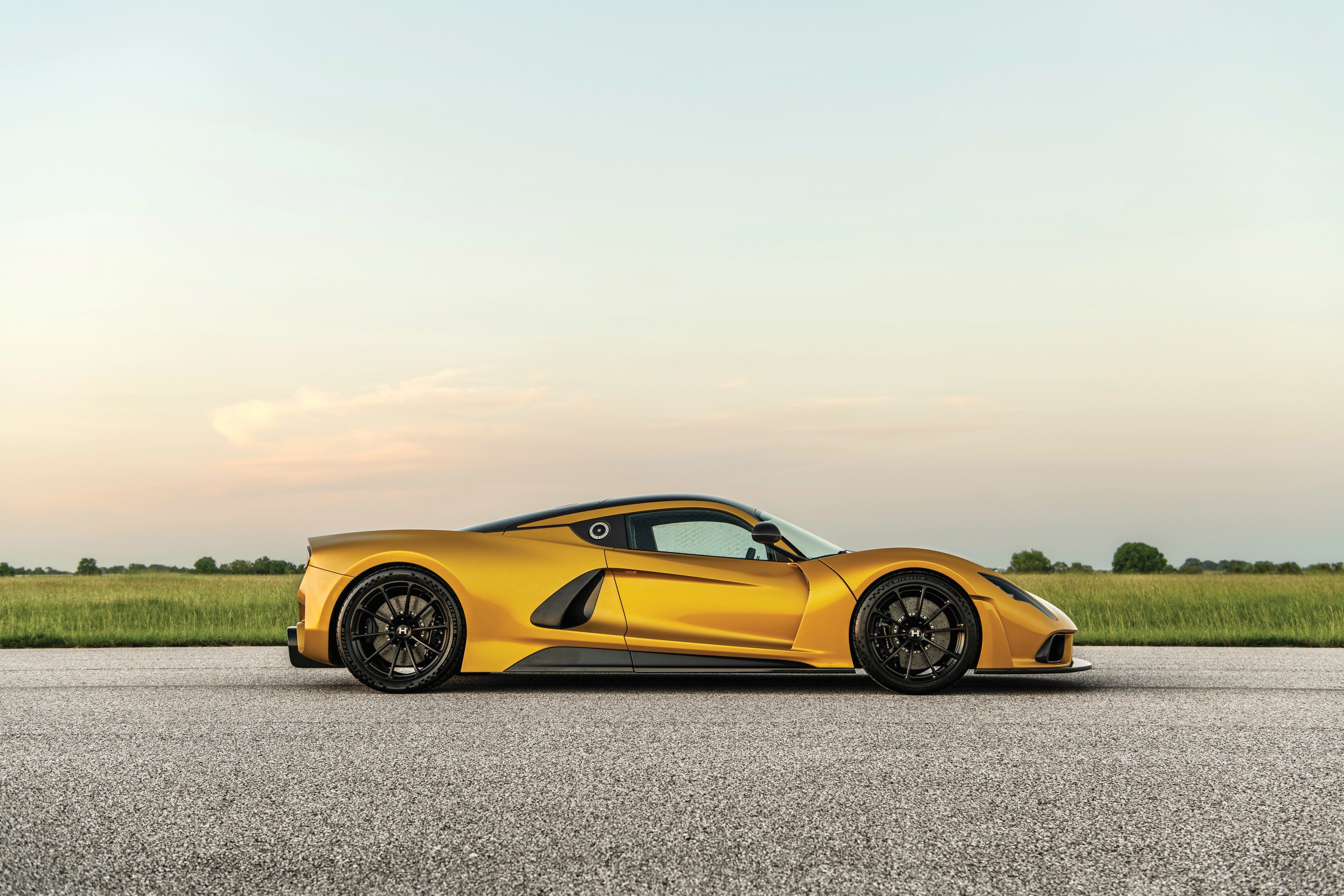
Realizing he’d erred by not changing the exterior Lotus styling enough, his team drew up designs for a successor with utterly redesigned sheet metal. Hennessey sent the plans to longtime buyer and supporter Phil Schiller, a former Apple senior vice president, asking for his thoughts.
“So Phil responds: ‘John, you’re just not going to get credit for having your own design till you engineer your own car.’ And that’s the point that spoke truth to me. It was painful to hear at the time, but I’m like, ‘He’s exactly right.’ ”
Schiller’s response, although a gut punch, precisely exposed what Hennessey needed to hear to cement the fact that no matter how valiantly he jousted with Internet trolls and YouTube commenters, there would be only one way to shut them up for good. But building a car from the ground up requires a lot of money—and the world’s best minds. So he galvanized support from partners Shell and Pennzoil, whom he calls “more than sponsors,” and they funded an exterior design and build for a full-scale 1:1 model of what they called the Venom F5. Once again Hennessey chose SEMA to debut his new creation, bringing the concept to Vegas in 2017. That was enough to drum up six orders, sufficient to justify the engineering cost for Hennessey Special Vehicles to shift into the next gear.
“I needed that boost of confidence after the success of the Venom GT to tell me that, ‘Okay, we’ve got what it takes to build our own car.’”
“I needed that boost of confidence after the success of the Venom GT to tell me that, ‘Okay, we’ve got what it takes to build our own car.’ And then as that momentum continued to build, it’s been cool because now we’ve attracted some high-level talent for the Venom F5.” On that note Hennessey proudly namechecks guys like Brian Jones, Hennessey VP of Engineering, who at his previous position at Multimatic was the chief engineer on tentpole hypercar unicorns like the Mercedes-AMG ONE, Aston Martin Valkyrie and Ford GT.
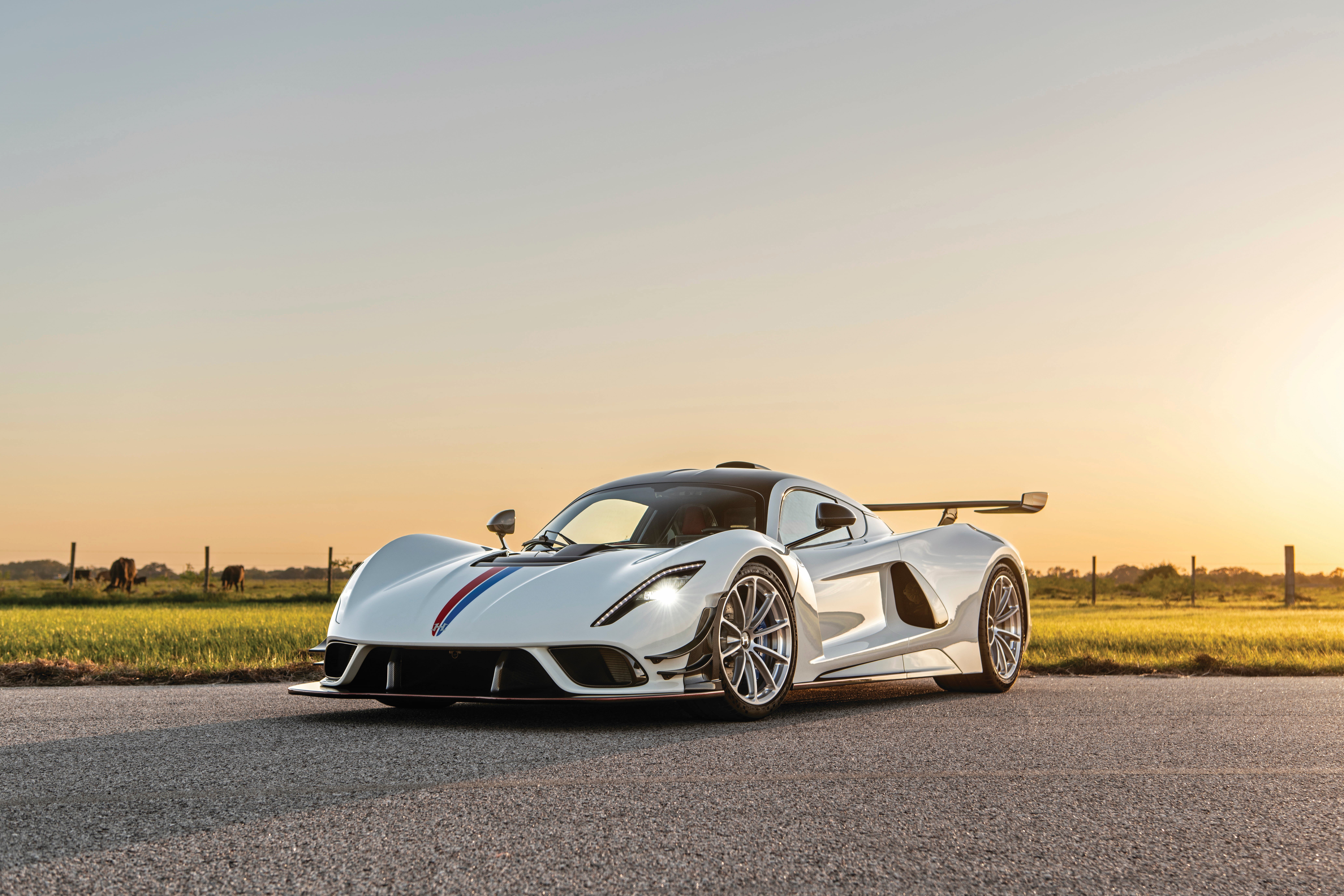
“I replied back to that e-mail Phil sent me with pictures of the F5 and said, ‘Hey, look what your e-mail in 2013 led to.’ And he ordered a car a week later,” adds Hennessey, noting the important role the Apple exec had on his company. “The Venom F5 wouldn’t exist today if it were not for some of our customers believing in me, believing in the brand, believing in the product, believing that we could do it. Because look, I get people asking all the time, ‘What was the biggest challenge in building the Venom F5?’ And my answer is always, ‘It was getting people to believe.’ ”
Not just suppliers, sponsors and employees to believe, mind you, but even his wife and children. This is no small order when one divulges that he’s aiming to engineer a hypercar from the ground up designed around a hand-built 6.6-liter V8 so explosive that Hennessey purposefully dubbed it “Fury”—after the “War Daddy” M4 Sherman tank that reportedly destroyed more than 250 German vehicles during World War II. But this hard-earned belief has been rewarded. Sizzling with 1,193 pound-feet of torque and a hellfire stable of 1,817 horses, the Venom F5 in its latest Revolution Coupe mode recently captured the track record at the Circuit of the Americas—besting the one-time record holder McLaren P1’s run by almost seven seconds, and the previous Czinger 21C by 0.43 seconds. To date Hennessey Special Vehicles have delivered more than 20 Venom F5’s to itchy-trigger-fingered buyers, with 30 to be finished by year’s end. In total almost 50 units have been sold. Still, the brand’s ultimate goal eludes the stubborn Texan.
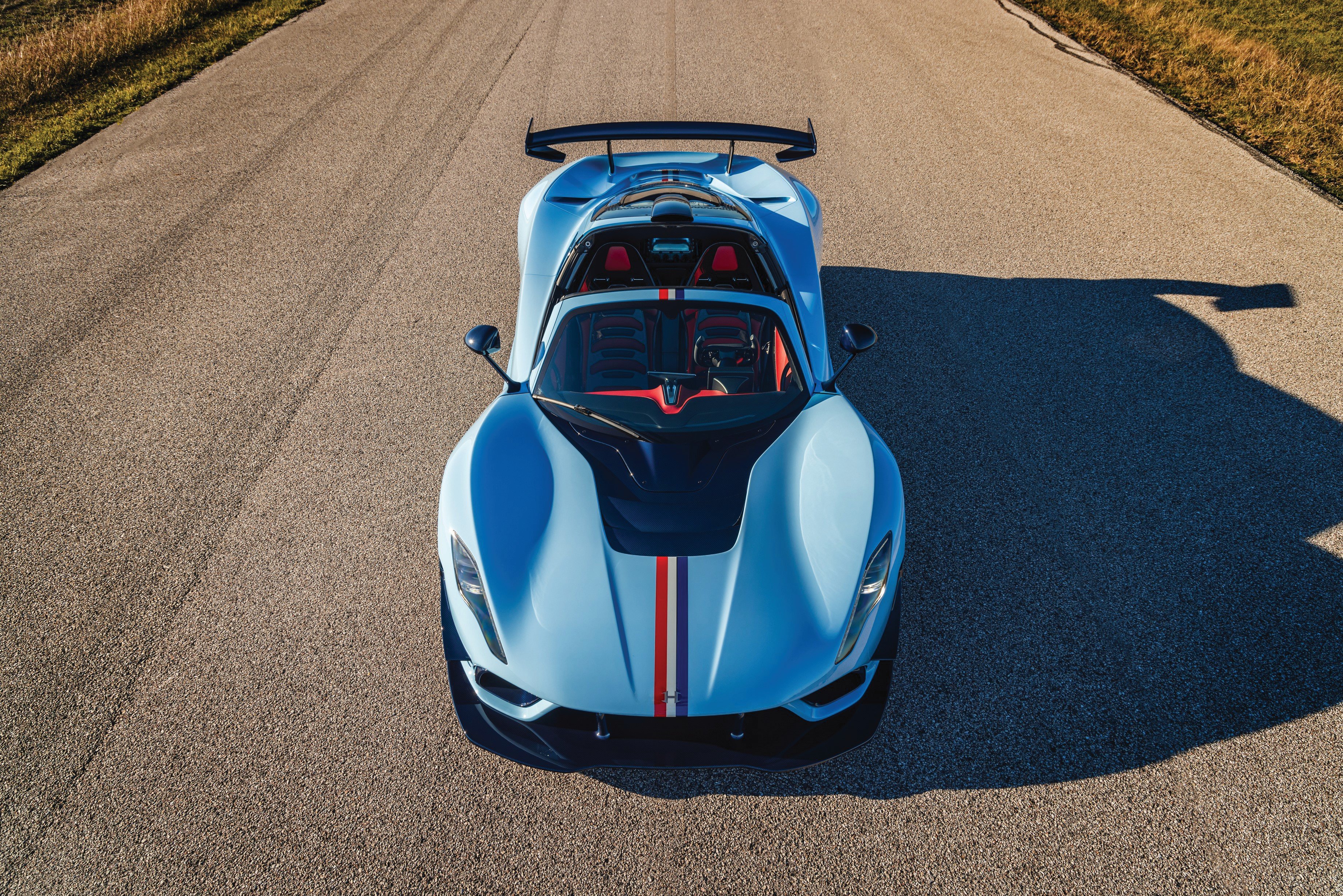
“We told the world we’re going to build the world’s fastest car, so are we going to do that?” Hennessey asks the sky, or perhaps himself. “We still haven’t forgotten about that goal. Matter of fact, I’ve got a whole army of engineers doing aerodynamic testing on a runway today, and we’re still intent on beating Bugatti. Yeah, it’s risky going out and breaking top speed records and testing cars at super high speeds, but it’s part of our DNA, part of who we are and what we do.”
The American Underdog once again bringing the good fight straight to the doorsteps of Europe. This small tuning shop from Houston, boasting barely 100 employees, taking on giants with seemingly endless resources at their disposal. Despite this colossal imbalance, Hennessey reveals at the moment the biggest obstacle to reaching the goal of world’s fastest is not necessarily engineering or funding—it’s simply finding a road in America long enough to allow him to reach speed safely. But fans of the dark horse, don’t sweat too much. It’s probably not smart to bet against him.
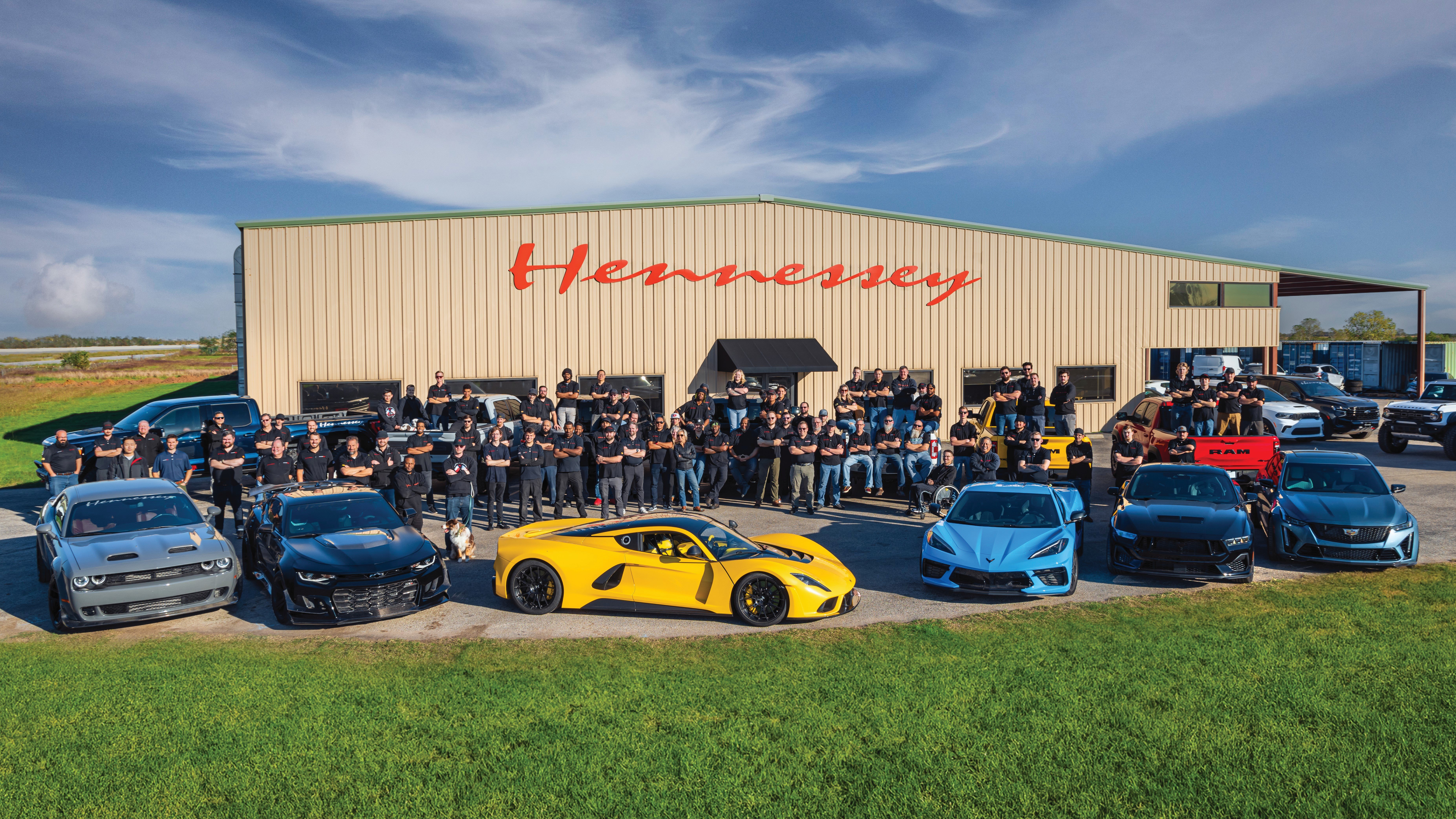
“The F5’s gone 272-mph in testing, but we’re just in third or fourth place. That’s okay. That’s good motivation for us,” Hennessey says. “But we don’t want to just leap frog these guys by a little bit; we want to leap frog them by a lot. I’m not going to throw a number at you, but we’re trying to go out and go faster—as much faster as we can.”
Follow Deputy Editor Nicolas Stecher on Instagram at @nickstecher
